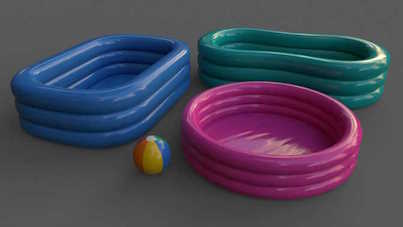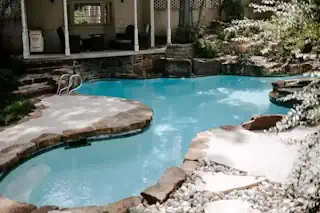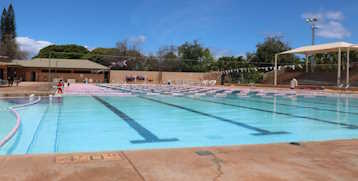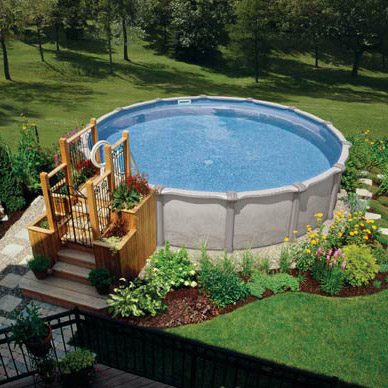The Inground Swimming Pool: A Comprehensive Guide for Homeowners
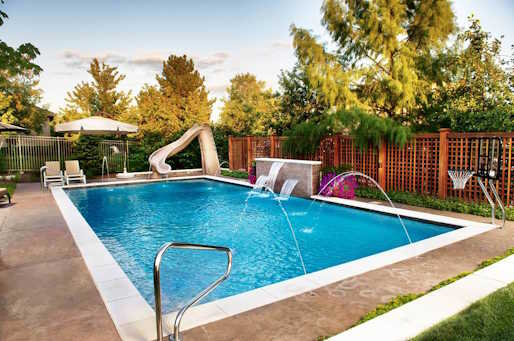
Dreaming of lounging by your own crystal-clear oasis in the comfort of your backyard? An inground swimming pool isn’t just a welcome respite from the summer heat; it’s a staple of luxurious living that adds value to your home. But before you take the plunge, you’ll want to understand the depth (no pun intended) of this investment.
In this comprehensive guide tailored for homeowners, we’re going to explore everything you need to know about inground swimming pools, including types, design considerations, costs, installation, maintenance, and even how to weave your pool into a beautiful outdoor living space. From individuals weighing the benefits of pool ownership to seasoned poolside aficionados, this comprehensive post is your one-stop shop for all things inground pool-related.
Ready to transform your backyard into an aquatic haven? Grab your sunscreen and a cool drink—wading through the wealth of information on inground swimming pools begins now.
Types of Inground Swimming Pools
The first splash is choosing the right pool for your space and needs. Inground pools come in three primary types—fiberglass, vinyl, and concrete, each with distinct characteristics and considerations.
Fiberglass Pools: The Speedster

Fiberglass pools are pre-molded, so they are quick to install and have a smooth surface that resists algae growth, making cleaning easier. However, they are limited in size and shape due to transportation constraints and can be more costly upfront.
Vinyl Pools: The Chameleon
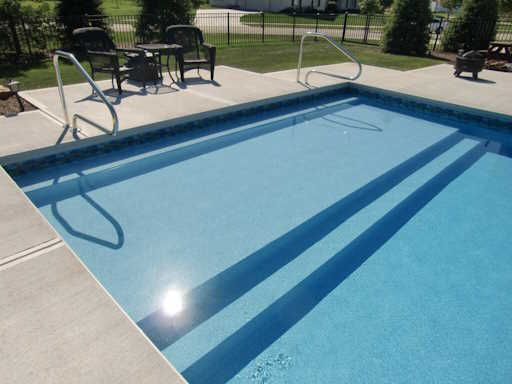
These pools are constructed with a flexible, custom-fit liner and have a smooth surface like a fiberglass pool, but at a more affordable price point. They can accommodate various shapes and are less prone to cracks than concrete, but their liners might need replacing every 5-9 years. They usually sit on a bed of sand making them a great idea for tender feet.
Concrete Pools: The Custom Built
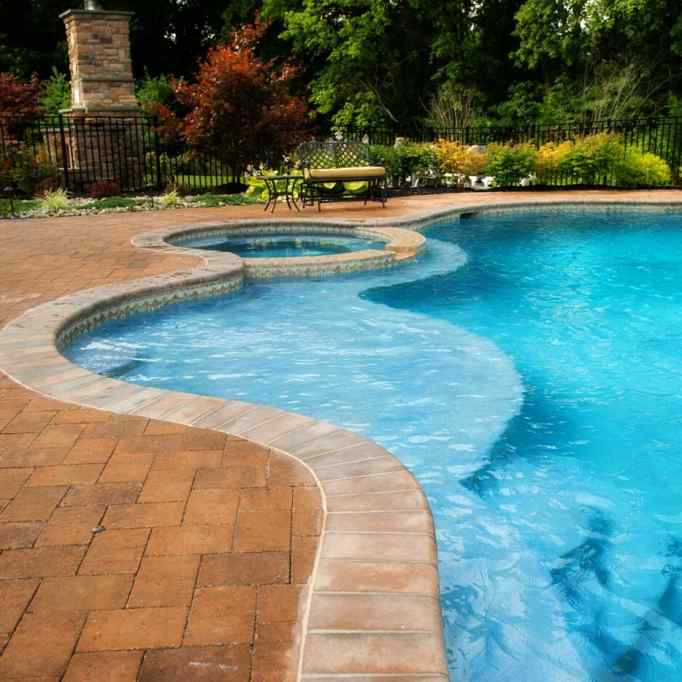
For the ultimate in customization, concrete, or gunite, pools are the way to go. They can be designed and built in any shape, size, and depth, and their durable structure can last a lifetime. However, they do come with a hefty price tag, and the surface can be rough on the feet and more prone to algae.
Semi Inground Pools: The Versatile Middle Ground
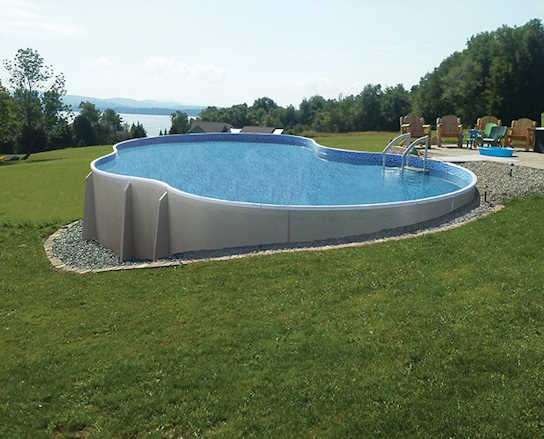
For those who seek a blend of adaptability, cost-efficiency, and aesthetic appeal, semi inground pools might just be your perfect match. Nestled comfortably between their fully inground and above-ground counterparts, semi inground pools offer homeowners the luxury of choice. They can be partially buried to seamlessly integrate with your landscape or deck, creating a natural and inviting outdoor area. Not only do they provide a more affordable alternative, but they also boast flexibility in design and location.
Perfect for sloped yards or for those seeking an innovative look, semi inground pools promise endless summer fun with a touch of elegance. Whether you’re looking to dip your toes into pool ownership or aiming to craft a unique backyard environment, semi inground pools deliver on both fronts, making them a cherished addition to any home.
Inground Swimming Pool Design Considerations
When it comes to design, your imagination is the limit. Visualize how your pool will harmonize with your home’s aesthetic and your family’s lifestyle.
Size, Shape, and Depth
A pool should complement your home and yard, not dominate it. Consider the size that will provide adequate swimming space but still allow for landscaping and other outdoor activities. Shape and depth are also critical decisions that will impact usage and aesthetics.
Landscaping Integration
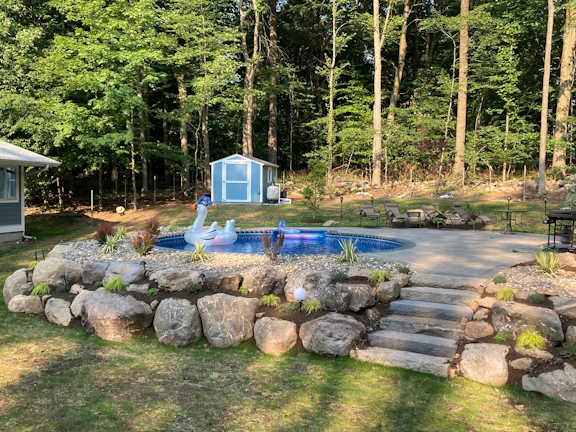
The design doesn’t stop with the pool’s edge. How your pool integrates with the surrounding landscape can make or break the visual appeal. Will you have a deck, patio, or both? What plants or trees will provide shade and privacy? These are questions that thoughtful design should address.
Cost Analysis
Investing in an inground swimming pool is a significant financial commitment. It’s more than just the pool itself; you need to consider additional expenses, like landscaping and poolside amenities.
Installation Costs
The cost of installing an inground pool varies widely based on the type of pool, its size, and the features you choose. Generally, a concrete pool is the most expensive to install, while fiberglass and vinyl are more economical.
Maintenance Expenses
Once your pool is in, there’s still the ongoing maintenance to consider. From chemicals to utilities, to services, your pool will have a monthly cost.
Long-term Value
While the upfront and ongoing costs can be daunting, consider that a well-maintained inground pool can add significant value to your property, not to mention the joy it brings to your family and potential for social gatherings.
DIY vs. Professional Installation
Installing an inground swimming pool is complex. It involves excavation, plumbing, electrical work, and more. Here, we weigh the options between doing it yourself and hiring professionals.
Pros and Cons of DIY
DIY projects can save money and give you a great sense of accomplishment. However, DIY pools are rare for a reason; the risks and challenges are high, and mistakes can be costly to fix.
The Value of Professionals
Professional pool builders bring experience and expertise to the table, ensuring that safety standards are met, and the job is done right the first time.
Maintenance and Care Tips
Proper maintenance is key to keeping your swimming pool in top condition. From daily upkeep to winterization, we cover the essentials.
Cleaning
Regular cleaning is vital to keep your in ground pool hygienic. Skimming, vacuuming, and scrubbing are weekly tasks that can be streamlined with the right tools.
Chemical Balance
Clean water isn’t enough; it must be chemically balanced to be safe for swimmers. Monitoring and adjusting pH levels and chlorine are required to maintain balance.
Winterization
In colder climates, closing your pool for the winter is a must. Freezing temperatures can cause serious damage, which can be avoided with proper winterization steps.
Enhancing Outdoor Living
An inground pool is just the beginning. To create the perfect outdoor oasis, you’ll want to add poolside amenities and thoughtful landscaping.
Poolside Amenities
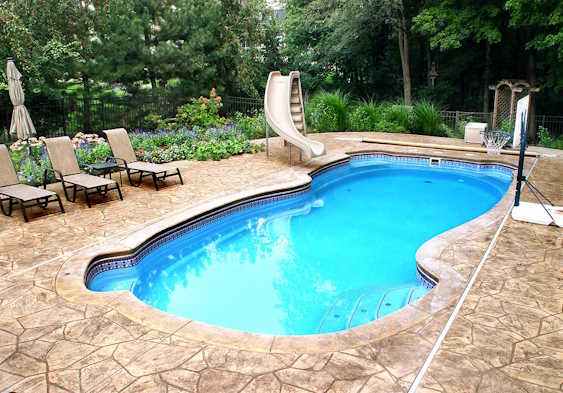
Is a hot tub or a fire pit on your wishlist? What about a water slide or a fountain? These luxurious additions can turn your pool into a full-fledged recreational area.
Landscaping Ideas
Softening your pool’s edges with plants, adding a pergola for shade, or installing mood lighting can elevate your pool’s ambiance.
Safety Measures
Pool ownership comes with significant responsibilities, particularly when it comes to safety. We detail the necessary safety features and practices.
Fencing
A pool fence is an essential safeguard, preventing access to the pool area when it’s not in use.
Alarms and Covers
Alarms on doors leading to the pool and covers help detect and prevent unauthorized use.
Supervision
Never underestimate the power of vigilant supervision, especially with children and inexperienced swimmers.
Conclusion
Investing in an inground swimming pool can be a life-transforming decision. It brings joy, relaxation, and can create cherished family memories. However, it’s not a decision to be taken lightly. Education and planning are your best companions on this underwater adventure. There are many advantages to adding a swimming pool to your dream backyard.
We’ve equipped you with the knowledge needed to propel your pool project forward. Whether it’s the start of your pool ownership dream or the next chapter in your poolside saga, we hope the information here serves you well. Make waves with your inground pool investment, and remember, the water’s always better where you can call it your own.
Frequently Asked Questions (FAQ)
How long does the installation of an inground swimming pool typically take?
The installation time can vary widely depending on the type of pool, but on average, it ranges from a few weeks to a couple of months. Factors like weather, soil conditions, and local permitting processes can also impact the timeline.
Can I choose any shape and depth for my pool?
Absolutely! One of the joys of designing an inground pool is tailoring it to fit your vision and your space. Whether you’re dreaming of a classic rectangle, a kidney shape, or something wholly unique, the choice is yours. Depth customization also allows you to create different zones in your pool, from shallow areas for kids to deeper sections for swimming laps.
What is the average cost of maintaining an inground pool annually?
The cost can fluctuate based on pool size, usage, and the types of chemicals and equipment you choose. Generally, homeowners can expect to spend between $1,200 to $1,800 annually on basic maintenance tasks. This estimate does not include occasional repairs or utility costs to heat the pool.
Is it worth investing in a professional pool installation?
While a DIY project can be tempting to save costs, professional installation ensures your pool is safe, efficient, and compliant with local regulations. Professionals can also foresee and solve complex issues, potentially saving you from costly mistakes and ensuring your pool’s longevity.
How can I enhance the safety of my pool?
In addition to fencing, alarms, and covers, consider installing non-slip surfaces around the pool and setting clear rules for pool use. Regular maintenance checks to ensure all safety equipment is in good working order can also make a significant difference.
